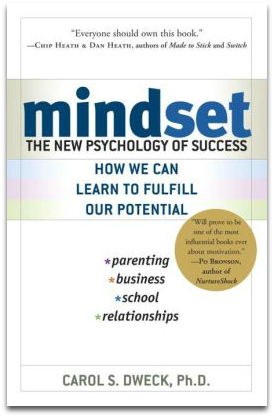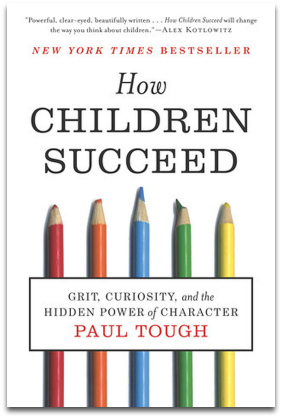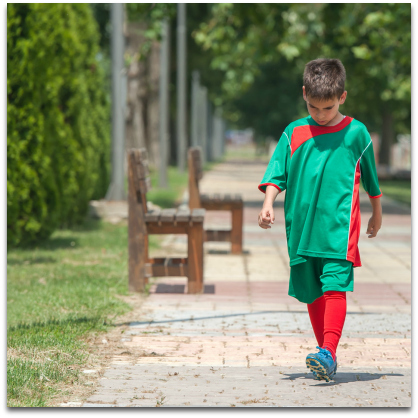 You’ve probably heard the word grit mentioned several times in the recent years in the context of raising kids who go on to fulfill their potential.
You’ve probably heard the word grit mentioned several times in the recent years in the context of raising kids who go on to fulfill their potential.
While the word grit may conjure images of Rocky Balboa or Dirty Harry, in the past decade or so it has taken on a whole new meaning that has stolen the attention of parents and educators alike.
That’s because according to University of Pennsylvania psychologist and MacArthur ‘genius’ Angela Duckworth, grit, defined as a child’s “perseverance and passion for long-term goals,” is a better indicator of future earnings and happiness than either IQ or talent.
Today’s mounting research on grit suggests that your child’s ability to work hard, endure struggle, fail, and try again may be the key to determining his or her long-term success and happiness.
So, What Is Grit and Why Does it Matter?
When we are in pursuit of a lofty goal, we don’t know when or even whether we will succeed. Until we do.
Grit is a distinct combination of passion, resilience, determination, and focus that allows a person to maintain the discipline and optimism to persevere in their goals even in the face of discomfort, rejection, and a lack of visible progress for years, or even decades.
Through extensive research, Angela Duckworth and her team have proven that the common denominator among spelling bee finalists, successful West Point cadets, salespeople and teachers who not only stick with, but improve in their performance, is grit.
And according to study after study, people who are smart, talented, kind, curious, and come from stable, loving homes, generally don’t succeed if they don’t know how to work hard, remain committed to their goals, and persevere through struggles and failure.
Can We Foster Grit in Children and How?
 As word of Duckworth’s research has spread, grit has become a hot topic in education and parenting circles, and supporters want to know how to build grit in children. Although Duckworth herself says she doesn’t know definitively how to increase grit in young people, she is hopeful it can be taught, and she and her team are working with researchers and schools across the country to find out how.
As word of Duckworth’s research has spread, grit has become a hot topic in education and parenting circles, and supporters want to know how to build grit in children. Although Duckworth herself says she doesn’t know definitively how to increase grit in young people, she is hopeful it can be taught, and she and her team are working with researchers and schools across the country to find out how.
In 2004 and 2006, Duckworth and a team of researchers tested the grit and self-control of several thousand incoming West Point cadets before their first summer at school. The summer program, known as “Beast Barracks,” is designed to push cadets to their mental and emotional limits, so much so that about 1 in 20 cadets drops out.
After taking their measurements, researchers looked for correlations between summer retention rates and cadets’ Whole Candidate Scores (a number calculated by West Point’s using, in part, SAT scores, GPA, and leadership potential), their grit scores and their self-discipline scores. It was grit that predicted retention better than any other score; cadets who scored at least one standard deviation above the norm in grit were 60% more likely to remain at West Point after the first summer than those with lower grit scores.
Although the terminology may be different, the Army includes this concept in the evaluation of even its most elite soldiers. My husband tells the story of his qualification to attend the U.S. Army’s Ranger School, its premier small unit leadership course.
In the final exercise before soldiers were chosen to attend the school, he and his fellow soldiers were told to “ruck up” with 35-pound packs and start walking. The instruction was something like, “We’re not going to tell you how far you have to walk or what the cut-off time is, but if you don’t finish under time, you’re going home.”
The would-be Rangers started walking, fast.
Finally, after hours of walking, the soldiers came to the spot where they had begun. From a distance, it looked like the finish. But as each man approached the sergeant yelled out a time and then said, “Good work. One lap down.”
More than one soldier crumbled there, dropping his pack and surrendering his spot in Ranger School. But those who continued walking found that the real finish was just around the corner, a few hundred yards away.
“Never quit in a valley,” says Angela Duckworth. Indeed, had those soldiers who quit maintained the fortitude to go on and move past that low point, they would have secured their spots in Ranger School.
As parents, it is up to us to cultivate the confidence and optimism in our children that will allow them to power through those low moments. A mother of two, Duckworth told Marguerite Del Giudice, “Kids are not able to just spontaneously grow up to be gritty people without being supported in that.”
So as parents, what can we do to provide that support? How do we teach our kids to push themselves? What can we do to help our kids be receptive to these tough lessons? Here are few ideas gleaned from the “grit” experts about how to be intentional in our quest to build grit.
#1 Find a Passion (or At Least an Engaging Activity)
 Okay, so it’s probably overkill to expect your five-year-old to have found his “passion.” But as children grow older, pursuing a particular interest of their own choosing can help them to identify a passion and understand that practice, hard work and perseverance are the surest way to achievement.
Okay, so it’s probably overkill to expect your five-year-old to have found his “passion.” But as children grow older, pursuing a particular interest of their own choosing can help them to identify a passion and understand that practice, hard work and perseverance are the surest way to achievement.
One of the characteristics of “gritty” people is that they are “especially motivated to seek happiness through focused engagement and a sense of meaning or purpose,” (Duckworth Lab Research Statement), so letting a child find his or her own passion is necessary in the long term.
In a story for NPR, Duckworth told Tovia Smith, “I don’t think people can become truly gritty and great at things they don’t love, so when we try to develop grit in kids, we also need to find and help them cultivate their passions.”
But even if our kids haven’t found their life’s work yet, we can help them learn the habits and traits that comprise grit.
At the Duckworth house, they have implemented a “Hard Thing Rule,” which says that every member of the family has to be working on something difficult at any given time. Each person can choose his or her “thing,” but it should be both interesting and require “deliberate practice almost daily.” And everyone has to stick with his or her selected activity for a set period of time. No one is allowed to quit mid-season because things seem too hard.
The idea is to teach kids to commit to something and work hard. The learning process is not always fun, and improvement does not come without effort. But if a child is motivated to improve at something because she likes it, then the struggle will seem worthwhile, and success will be its own reward.
Be it ballet, soccer, violin, or karate, allowing a child to choose an activity and work at it for a whole season (or longer for older children) not only helps children find and cultivate a passion, but it also teaches self-discipline and reinforces the idea that practice begets skill.
#2 Recognize That Frustration, Confusion and Practice Are Par for the Course
 According to the Duckworth lab, those who believe that diligence and perseverance pay off beat out their less optimistic–and often more talented–counterparts nearly every time.
According to the Duckworth lab, those who believe that diligence and perseverance pay off beat out their less optimistic–and often more talented–counterparts nearly every time.
In a 2013 TED Talk, Duckworth said it is the “best idea” she has heard about how to increase grit in children is to teach what Stanford professor and author of the highly acclaimed book Mindset: The New Psychology of Success, Carol Dweck, calls a “growth mindset.”
Dweck has found that people with “growth mindsets” are more resilient and tend to push through struggle because they believe that hard work is part of the process, and they understand that failure is not a permanent condition. Those with “fixed mindsets” on the other hand, believe that success stems from innate talent and tend to give up easily—why work hard at something if you don’t believe you can change anything?
The Duckworth lab’s recent research, undertaken in partnership with classroom teachers, shows that students become less frustrated with the learning process and put forth more effort when they understand that even experts struggle to learn their craft.
First-hand accounts of the obstacles that experts have to overcome to “make it” have a real impact on helping kids manage frustration.
When a skilled performer does something well, it looks easy. Watching Jordan Spieth drive a golf ball, Taylor Swift perform a song or Ina Garten prepare a meal can make success seem easy because we never see the frustration, fatigue or years of practice and preparation that precede the final product. In working to develop grit in children, we must point out the toil that goes on behind the scenes.
Duckworth is fond of quoting world-class dancer Martha Graham who said, “Dancing appears glamorous, easy, delightful. But the path to the paradise of achievement is not easier than any other. There is fatigue so great that the body cries, even in its sleep. There are times of complete frustration, there are daily small deaths.”
Last summer while at the City Farmer’s Market, my children and I stopped to watch a talented tap dancer performing a street show. My daughter Sue* was mesmerized. “I want to dance like that,” she said. “I want to take tap.”
When the dancer took a break, we asked him how long he had been dancing.
“14 years,” he said.
“And how much do you practice?” I asked.
“Three hours a day,” he said.
Later, Sue and I got out the calculator. That’s 15,330 hours of practice!
It’s not that we should never let our children change interests or shift activities as they grow—they are kids after all—but understanding the value of practice, hard work and even struggle may be the thing that carries them across the finish line.
#3 Take Risks (and Tell Your Kids About It)
 Grit demands risk taking. Successful people are willing to step out of their comfort zones and risk failure in order to learn something new or pursue a long-term goal. And while, by definition, a risk may end in failure, successful adults don’t give up.
Grit demands risk taking. Successful people are willing to step out of their comfort zones and risk failure in order to learn something new or pursue a long-term goal. And while, by definition, a risk may end in failure, successful adults don’t give up.
Paul Tough, author of How Children Succeed says, “Lots of parents don’t want to talk about their failures in front of their kids, but that’s denying kids the potentially powerful experience of seeing their parents bounce back.”
The Summers boys were 9, 11, and 13 when the late Dr. Robert Summers, an economist at the University of Pennsylvania, applied for a Ford Foundation grant that would allow the family to spend a year in England.
As his wife, Dr. Anita Summers, tells it, the Summers decided to share their risk-taking with their children by telling the boys about the application months before they knew the outcome.
In addition to wanting the boys to “get their arms around the possibility of being away for the year,” Dr. Summers says they wanted their sons to see that if their father didn’t win the fellowship, they “would be very disappointed, but [that] life goes on.”
Either way, the boys would gain valuable insights from their father’s experience. They could feel the anticipation and excitement that accompanies risk-taking as they waited to learn their fate, and then either experience the joy of success or share in the disappointment of failure, but win or lose, their father would continue to pursue his life’s work.
On the day that Dr. Summers finally received his letter, the family waited for him to come home and deliver the news. And when he produced the acceptance letter, the boys were able to celebrate with their parents in a way that they could not have if they hadn’t felt the apprehension and excitement that preceded the acceptance.
Further, if the boys hadn’t been privy to the discomfort of not knowing the outcome, they might have been left with the impression that winning a prestigious fellowship simply falls into one’s lap rather than being sought after and hard won.
The lesson seems to have worked. All three of their boys have gone on to successful careers in law, medicine and public policy. Their oldest, Larry, has served as Secretary of the Treasury and President of Harvard University.
When Dr. Summers shared this story, I thought about the handful of high school seniors I had met who were afraid to apply to certain colleges out of a fear of rejection. Some were kids with high test scores and exceptional GPAs who refused to strive for acceptance to an elite school because they didn’t think they would get in, and others were lower achieving students who refused to apply at all. It’s hard to imagine that those kids would not be better off today if they had possessed the courage to risk rejection in pursuit of success.
It’s easy to spout aphorisms like “Nothing ventured, nothing gained,” but letting our kids see us put a little skin in the game may build the optimism and courage they need to take some risks themselves.
#4 Teach That Failure Is Not the End
 5,127 – The number of failed vacuum prototypes created by James Dyson before he came out with the Dual Cyclone bagless vacuum cleaner that made him a billionaire.
5,127 – The number of failed vacuum prototypes created by James Dyson before he came out with the Dual Cyclone bagless vacuum cleaner that made him a billionaire.
30 – The number of rejections Stephen King received before his first novel, Carrie, was finally accepted by a publisher.
$4 million – The number of dollars lost on GoPro inventor Nick Woodman’s failed first company.
According to the Duckworth lab statement, gritty people have “cognitive dispositions that incline [them] to look for changeable causes of their current problems.”
Grit means maintaining the hope and vision to change even under the most challenging circumstances.
The internet is littered with one-liners about overcoming failure, but inspiring aphorisms are not enough to convince children that they should endure rejections, setbacks and failures, especially painful ones.
In order to teach children to be resilient, we need to show them real examples of how failures and setbacks can lead to success—by talking about them regularly, sharing our own experiences, and most importantly, allowing them to fail.
In his New York Times article “The Secret to Success is Failure,” Paul Tough says,
It is a central paradox of contemporary parenting, in fact: we have an acute, almost biological impulse to provide for our children, to give them everything they want and need, to protect them from dangers and discomforts both large and small. And yet we all know — on some level, at least — that what kids need more than anything is a little hardship: some challenge, some deprivation that they can overcome, even if just to prove to themselves that they can.
As parents, it is important that we don’t let our protective instincts rob our kids of first-hand experiences with hard-won victories.
This winter my husband and I put Paul Tough’s assertion to the test. At our local gym, kids who pass a swimming test are given a wristband that allows them to swim in the pool without a life jacket on. Despite having taken several years of swimming lessons, our daughter, Sue, has struggled with swimming and been slow to master floating on her back.
Until a few weeks ago, she would not attempt the swimming test because she was terrified of failing. Likewise, while we wanted her to earn her band, we did not want her to become discouraged if she failed.
Finally, we put a deadline before her: She had to attempt the swimming test before spring break. We weren’t sure whether or not she would pass, but we decided that Sue facing her fear of failing was paramount. “If you pass,” we told her, “You’ll get your wristband, and if you don’t, we’ll know what you need to work on. We’ll practice and take the test again.”
When the moment came, Sue hopped into the pool and swam her freestyle without any trouble, but when it came time to float, she couldn’t flip onto her back and tried several times before she burst into tears.
“I want to practice. I want to practice,” she begged as we got out of the test pool and back into the kiddie pool. We spent the next 15 minutes half playing, half practicing before she said, “I want to take it again.”
While I was proud of her resilience, I was also apprehensive about a second failure and told her I didn’t think she had practiced enough. When she insisted, I summoned the lifeguard. Then Sue failed her test for a second time.
At home that night, we celebrated Sue’s decision to take the test but talked about how we’d need to practice her back float a lot more before she tried the test again.
Sue is still working toward her swimming test goal by taking weekly swimming lessons and practicing on her own, but the failure has not kept her out of the pool or dampened her resolve.
Now that she’s failed once, the prospect of another failure remains unpleasant but no longer deters her from trying. We are all confident that with practice she will also succeed in earning her wristband.
As parents, we all want to see our kids succeed, but as they search to find their footing on the pathway to success, it is important to show them that failure is part of the process, not an endpoint. It is a necessary crossing on the road to achievement.
And if we don’t let them see us fail or experience a failure themselves in the safety of our presence, they may not have the stamina to overcome one when they are on their own.
In the months leading up to December 2014, Tyler Wagner trained to climb Mount Kilimanjaro, the highest mountain in Africa. He sacrificed time with his family, a wife and four children, for training and shared his excitement about the challenge with them as he worked toward his goal. His daughter even checked out a library book with a picture of Mount Kilimanjaro on the front.
Then, the day after Christmas, he left his family and journeyed toward the peak with a group of friends. But before he could reach the summit, Tyler became so sick that he could not go on.
Even now months later, he finds it difficult to reflect on the failed attempt. “I know I was a mess with a fever and cough and physically unable to continue,” he says, “but even that excuse doesn’t make it okay in my head.”
Still, he and his wife, Lauren, have turned his failure into a lesson for his kids.
When Tyler talked to his family on Skype soon after leaving the mountain, he shared his sadness and frustration over not finishing the climb. But since then, they have talked a lot about his experience in Africa, not just the climb but also the safari that followed—the animals, the food, and the way Tyler adapted daily routines in this foreign environment.
“Fear of failure and disappointment is something I don’t want them to focus on,” he says. “I hope they saw that I took a chance and stepped out of my comfort zone, and while I didn’t climb to the summit, I was still able to have a great experience.”
Today Tyler is talking about a second attempt, and Lauren says it may be a family affair. “The kids believe that Tyler will definitely try again,” she says, “and they plan to be there with him. It has now become a goal of theirs to do it with him.”
Failure is painful and humbling, and as parents it is difficult to admit to our kids that it happens to us too. Yet exposing them to failure may be the very thing to inoculate them against giving up when they come face-to-face with failure themselves. They need to know that frustrating and painful moments are not the end of something, but a natural part of the journey toward achievement.
The 2-Minute Action Plan for Fine Parents
Consider how you and your spouse approach risk and failure. Where have you felt challenged in your own life and what did you do about it?
Do you approach problems with a sense of optimism or defeat?
Take the “grit test,” then remember that your score isn’t fixed, and neither is your child’s.
The Ongoing Action Plan for Fine Parents
Join the Duckworths and implement a “Hard Thing Rule.” Help your child identify a challenging long-term goal to work toward and encourage regular practice.
Talk about setbacks as they arise. Help your child build a plan B or C when necessary.
Share your feelings about your challenge and celebrate when family members attempt persevere through difficult tasks.
Talk with your children regularly about your own failures and how you persevered (or could have).
When you child meets with a skill, activity or sport that is difficult to master, resist the urge to “save” her and don’t allow her to quit at the first sign of trouble. Discourage her from quitting at a low point. Instead, use the experience as a way to teach resilience and an opportunity for success. Help her to brainstorm strategies and make an action plan but allow her to take ownership of the solution.
*Some details have been changed to protect the identity of my child.
I love this article and its whole purpose. I have a child of my own and I Could definitely take this article into action when it’s necassary.
It all comes down to determination and support. If a parent can inculcate positive traits in the children then its half the battle won. There needs to be a rapport between parents and their kids. They need to trust each other and learn from mistakes…no matter how old they may be.
Grit is so important in anything we pursue, it’s the nature of how we succeed in life. Thanks for this post. 🙂
Max raymond’s mom is hot
kidding
Ur mom is hot
This is so eye-opening and educative for me. I can’t thank you enough for this great article.
I truly believe you need to be born with grit. I now know I have it . When I was a child I was shy , sheltered , but loved very much. As an adult , through trials and tribulations , my Grit was obvious. It was there when I needed it. Maybe being aware you have it and knowing what to look for is a key at a young age.
I am 72 , still keen , still do things as if I am 30 . Special is what I call it. Maybe it is inherited. I was just told I had Grit. I never knew what that was. Now I know It’s ME.
I love this information and I just found out this week about the word “Grit”. I google and have start reading about Grit. I am mentoring a high school now and did not know that I was talking about Grit to her.
Why do they not teach Grit to teachers and eventually introduce it to the kids?
Just my view on it for now,
Thank you
Shirley
Loved this article. It definitely chimed with me that you have to be passionate about what you want to achieve. It is much easier to give up when you don’t care that much about the outcome in the first place.
It also made me think of one of my pet peeves: praising kids for how clever they are. You know “what a nice picture, aren’t you clever”, “good calculating, how clever”, “you took the steps all by yourself, what a clever boy you are”. Makes me grit (no pun intended) my teeth. I think it is so important to praise effort and hard work because that way failure is not failure of you a person. Besides, clever people need to work hard too.
Glad you liked the article, Silke.
You bring up a very good point about praise. I just want to share a #fail here… In this case in particular, maybe because of how common mindless praise is part of our everyday vocabulary, reality is so much harder than theory!!! I have been consciously trying to praise effort instead of innate talent, or the end result, for probably 2 years now. And still, often I slip up and say exactly the kind of things that would make your teeth (and mine) grit. I remember in the book “Mindset”, which started me on the growth mindset journey (“praise effort, not innate talent or end results” being one of the many wonderful lessons from that book), the author Dr. Dweck shares an anecdote of how she slipped up and used generic praise (I think something along the lines of “Great job, honey!”). And this is a professor who has lived and breathed this philosophy on a daily basis for decades!!! It’s a good reminder — so, I take a step back, pat myself for all the effort I am putting in, make a note to self to be more watchful of mindless praise in the future and move on 🙂
Angela Duckworth’s “Never quit in a valley” is the equivalent of our family’s “Every mountain top has a valley.” We teach the kids that the only reason the mountaintops are so amazing is because of the valleys. The struggle makes the prize all the more sweet.
And when I say we teach the kids, I mean, we vocalize it so we can hear it too.
I loved this article. Not just because I agree, but because I see a lack of grit paired with a sense of entitlement in my generation as well as my kids’.
My husband and I determined early on to not raise lazy kids. It meant we couldn’t be lazy. Leading by example is so much more difficult than the phrase appears.
We aren’t always consistent, but we do work on the balance of pushing just enough. We want them to know we expect them to rise above their discomfort levels, but not so much that they feel alone in the world.
Ugh…it’s hard.
And it starts early. Really early.
My middle child has always loved music. She plays the guitar and piano. She listens to piano music while homeschooling. It’s important to her, but she struggles with what she wants to sound like one day and what she sounds like today.
I hear her improvement, but she doesn’t – not always.
When we found an instructor for her, we made her commit to a year. It was hard in the first three months, but now, it is a regular part of her week. She doesn’t always love it, but she always wants it because there is an end goal of playing the music she most adores.
But there are those days of tears, slamming her hands on the keys and running to sob in her pillow…still.
Thank you for a lovely post.
Forgive the lengthy comment.
What a wonderful comment Heather! And so many great points of discussion, I don’t even know where to start 🙂
The part that resonated the most with me though is this: she struggles with what she wants to sound like one day and what she sounds like today. I see this so often in both my daughter and myself, and yet when you don’t specifically look for it, it is easy to miss. It is easy to just brush it off as generic frustration or laziness rather the inability to reconcile the idea of “what it should be like” with the reality of “what it actually is”. We somehow miss the struggle (practice, patience, resilience, etc) that is required to make the reality match up with the idea in our head. Thank you so much for vocalizing it (and I have to agree on that point you make as well – vocalizing is a big deal… it really helps you realize something, see it in a different light and makes it stick in your head!)
“We somehow miss the struggle (practice, patience, resilience, etc) that is required to make the reality match up with the idea in our head”
Yes, oh my goodness yes.
Thanks for a very helpful and insightful article. I have been aware for a long time that my 5 year old son has a wonderful way of persevering when he wants to learn something, and he doesn’t give up until he succeeds, even when he feels frustrated. I have always felt that this will serve him well in life and now I have confirmation of this and a word for it: “grit”. Thank you!
That is so great, Julia! My daughter is gritty when it comes to a few things, and no so much with respect to others. For me the biggest take away from this article was the recognition that passion plays a huge role in how gritty we are…. and from that the lesson that I need to focus on what my daughter already likes, rather than trying to force her to try, or get better at, something she doesn’t particularly care for.
What a wonderful, insightful article. It has inspired me to read more on the topic and incorporate this line of thinking into workshops my wife and I present on “Great Parenting Skills”. I would particularly be interested in discovering if there is a correlation between grit and temperament. Have there been any studies on this? I surmise that each of the four temperaments have elements of “grittiness” and it is a matter of developing that characteristic as part of their total makeup.
So glad you liked the article, Wayne. And nice to see this being incorporated in workshops! I am not aware of any studies about the correlation between grit and temperament. Jenny might pipe in with a response if she found any during her research. I do however recommend the book “Mindset” if you have not already incorporated it in your workshop — I found it changed my thinking quite fundamentally!
This article blew me away, it’s so well written and thoroughly researched. I feel like after reading this I can really incorporate ways to help my children, and myself, with grit. It also made me look back on my own childhood and my experiences of quitting things too soon because of a fear of failure. This followed me in life and I’m still working to undo the damage. The last thing I want is to pass this down to my kids. Thank you for sharing your wisdom!
So glad to hear you liked the article, Dana. Thank you for such wonderful words of encouragement! Jenny did an awesome job with this article – I can’t tell you how much effort she put into this. I am so grateful that she chose A Fine Parent to share this article on 🙂